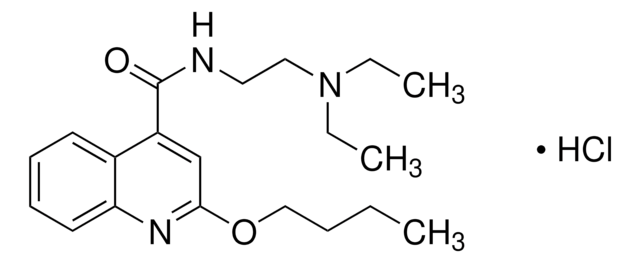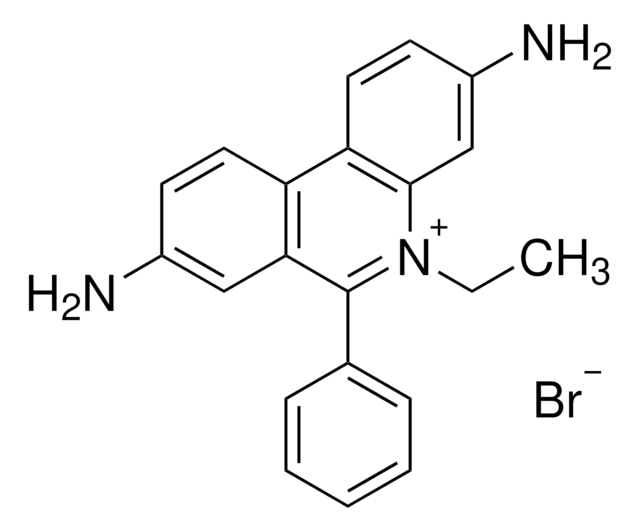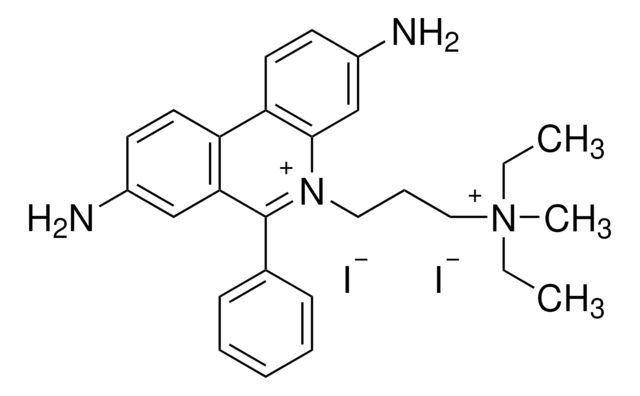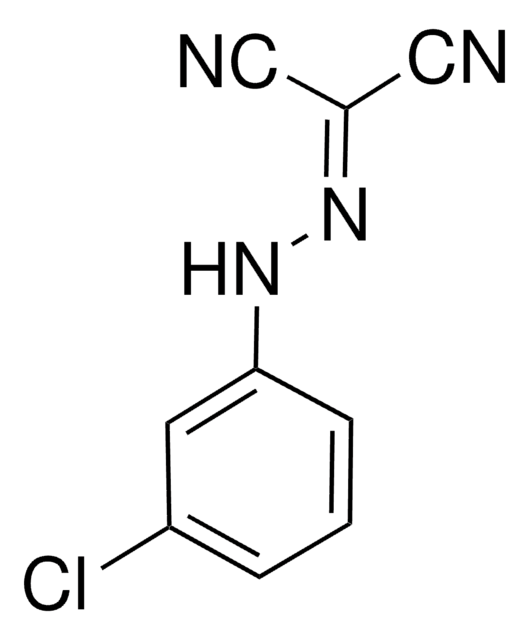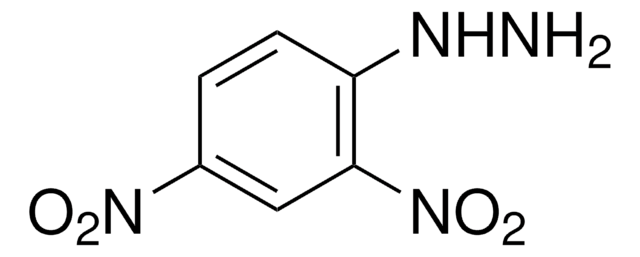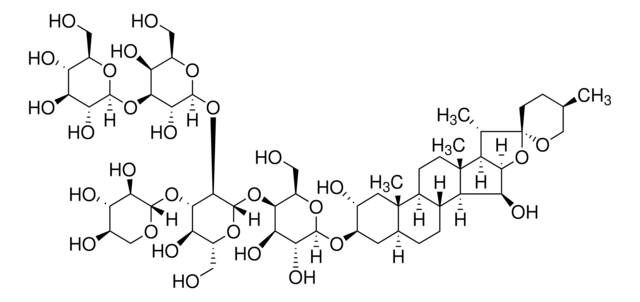D0638
Dibucaine hydrochloride
analytical standard, ≥99%
Synonym(s):
2-Butoxy-N-(2-diethylaminoethyl)-4-quinolinecarboxamide hydrochloride, Cinchocaine hydrochloride
About This Item
Recommended Products
grade
analytical standard
Quality Level
assay
≥99%
technique(s)
HPLC: suitable
gas chromatography (GC): suitable
mp
99-101 °C (lit.)
application(s)
forensics and toxicology
pharmaceutical (small molecule)
format
neat
SMILES string
Cl[H].CCCCOc1cc(C(=O)NCCN(CC)CC)c2ccccc2n1
InChI
1S/C20H29N3O2.ClH/c1-4-7-14-25-19-15-17(16-10-8-9-11-18(16)22-19)20(24)21-12-13-23(5-2)6-3;/h8-11,15H,4-7,12-14H2,1-3H3,(H,21,24);1H
InChI key
IVHBBMHQKZBJEU-UHFFFAOYSA-N
Gene Information
human ... SCN10A(6336) , SCN5A(6331)
Looking for similar products? Visit Product Comparison Guide
Related Categories
General description
Application
Biochem/physiol Actions
wgk_germany
WGK 3
flash_point_f
Not applicable
flash_point_c
Not applicable
ppe
dust mask type N95 (US), Eyeshields, Faceshields, Gloves
Choose from one of the most recent versions:
Certificates of Analysis (COA)
Sorry, we don't have COAs for this product available online at this time.
If you need assistance, please contact Customer Support.
Already Own This Product?
Find documentation for the products that you have recently purchased in the Document Library.
Customers Also Viewed
Our team of scientists has experience in all areas of research including Life Science, Material Science, Chemical Synthesis, Chromatography, Analytical and many others.
Contact Technical Service